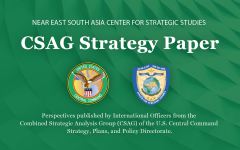The Role of Kazakhstan in Strategic Competition?
March 11, 2022 2022-03-11 16:32The Role of Kazakhstan in Strategic Competition?
The Role of Kazakhstan in Strategic Competition?
By: CDR Hubert MROZ, POL Navy, CSAG CCJ5
25 Jan 2022
Introduction:
Central Asia was once a geostrategic nexus during the 19th century and beginning of the 20th century, when the British Empire and the Russian Empire were entangled in what was called “the Great Game” – a political and diplomatic confrontation over regional leverages. Now, CA is once again in the focus of the international community. This is where the interests of major powers – the United States, Russia, and China – must be confronted most directly. Strategic competition in CA is much broader than just between the so-called “big three” (the United States, Russia, and China). There are other powers (sometimes referred to as the ‘junior players’) who are already present and others that want to emerge in the region. After the Taliban took over Afghanistan, the importance of CA emerges amidst a growing concern about global security and different countries are looking to position themselves conveniently in CA to monitor the tide in Middle East (ME).
As a leading country among the countries of Central Asia, Kazakhstan is a key partner for many of them.
Kazakhstan is celebrating 30 years of independence, and since the dissolution of the USSR, the country has made significant progress in many domains, not to mention being ranked 25th in the World Bank’s Ease of Doing Business Index – well ahead of other CA states. Kazakhstan is evolving gradually from a Soviet-command style economy to a more Western-style market economy to attract investors, develop new industries and gain new trade partners with ambition of becoming one of the 30 most developed nations by 2050. Kazakhstan is well known as a major global producer of oil, gas, and minerals, including uranium as the world’s largest producer. Kazakhstan is already the recipient of significant European investment and trade, primarily in the energy field. In recent years, Nur-Sultan has sought to develop other industries including agriculture, banking services, cryptocurrencies, IT services, manufacturing, and tourism. Considering the geography alone, Kazakhstan is certainly a country that cannot be underestimated in strategic competition. Its geographical position means that the country is a natural partner to bordering global powers – Russia and China.
Key Points:
- Strategic competition in Central Asia (CA) is much broader than just between the “big three”. There are other powers who are already present and others that want to emerge in the region. After the Taliban took over Afghanistan, the importance of CA is growing even stronger.
- As regional influence expands, CHI-RUS are likely to direct joint efforts against U.S. interests, particularly in the economic and energy domains, to push U.S. based companies out of the CA region.
- Dynamically developing Kazakhstan with its multi-vector foreign policy is worthwhile for investment and market prospects. Kazakhstan is promoting its multi-vector foreign policy to attract foreign investments. At the same time, Kazakhs’ foreign policy has limited bandwidth, which may be affected by pressure from RUS and CHI.
- The recent riots in Kazakhstan (beginning of January 2022) put its multi-vector foreign policy under a test, and most likely President Tokayev was forced to “choose a side” in strategic competition. Outwardly, he made his call by asking a Eurasian military alliance (the CSTO) to stand in.
The opinions and conclusions expressed herein are those of a number of international officers within the Combined Strategic Analysis Group (CSAG) and do not necessarily reflect the views of United States Central Command, not of the nations represented within the CSAG or any other governmental agency.






